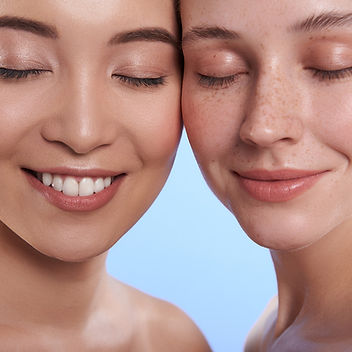Acerca de

Blepharoplasty
Lower Lid Blepharoplasty (Lower Lid Lift)
People say that the eyes are the window to the soul. While the eyes can be one of the most prominent and attractive facial features, aging eyelids can create a tired, worn-out appearance. As we get older, the lower eyelids can become heavy with protruding fat pockets as well as excess skin. Additionally, there is often volume loss along the upper cheek and edge of the eye socket that creates a hollowness below the eyelid.
While there are some non-surgical options that can help improve the appearance of the lower eyelid and upper cheek, surgery offers the most comprehensive and effective approach.
Eyelid surgery is commonly performed without general anesthesia which helps make it a very safe procedure with a speedy recovery. Most patients remark that the surgery and healing process was much easier than expected.
The type of incision depends on the nature of the eyelid. If there is extra skin along with muscle or fat, the incision is placed just below the lash line. Just like the upper lid, with careful surgical technique, a well-healed incision is often imperceptible. If there is no skin to be removed, the incision may be placed inside the eyelid, avoiding an external incision. With lower eyelids, it is extremely important to avoid excessive fat removal which can create a hollowed-out appearance.
In many patients, Dr. Vipond will transfer their own eyelid fat to help camouflage prominent eyelid grooves and create a more youthful lower eyelid and cheek. Proper evaluation in the office is essential to choose the best procedure. For patients with deep tear troughs and protruding fat, fat re-positioning where the excess fat is moved into the tear trough may be the best option to preserve volume in the face and help to refresh the appearance.
While lower eyelid surgery can be relatively straightforward, it is extremely important to avoid any stretching of the lower lid. Dr. Vipond uses several techniques to help support the lower lid after surgery to avoid a “turned down” eyelid.
Revision Blepharoplasty
While Lower Blepharoplasty can turn back the clock on aging lower eyelids, unfortunately, the aging process will continue. Sometimes non-invasive methods may help, but often another surgery may be the best option. Dr. Vipond is well-experienced in performing secondary, or revision, eyelids surgeries to correct or improve the results from earlier operations. A careful approach and meticulous planning can help restore a natural youthful beauty to features affected by age and surgical trauma.
Upper Lid Blepharoplasty (Upper Lid Lift)
People say that the eyes are the window to the soul. While the eyes can be one of the most prominent and attractive facial features, aging eyelids can create a tired, worn- out appearance. As we get older, the upper eyelids can become heavy with excess skin, thickened muscle, and protruding fat pockets. Upper lid blepharoplasty can be a very straightforward procedure to remove the excess skin, muscle, and fat to help restore a more youthful, refreshed appearance. However, it is essential to properly evaluate each patient’s eyelids and to individually tailor the technique to achieve the best results. Dr. Vipond likes to say that what is left behind after upper eyelid lifts is far more important than what is taken out. While it may sound more impressive to hear about how much skin, fat, and muscle are removed, if this is done inappropriately, patients can be left with a hollowed out, “surprised” appearance that can actually make them look older. There are many celebrities who can attest to this. Dr. Vipond believes that the Artistry of Facial Plastic Surgery is especially vital when it comes to operating on the eyes as proper planning of the procedure and design of the incision is required to achieve the best possible result.
Recognizing the differences between male and female eyelid shape as well as the uniqueness between ethnicities is extremely important to avoid an unnatural, “surprised” or “wide-eyed” look. Dr. Vipond has considerable experience operating on patients with a variety of cultural backgrounds and is very sensitive to patients’ wishes to preserve their individuality. For the upper eyelids, the incision is camouflaged within a natural crease where the eyelid skin attaches to the eyelid. With careful technique and design, a well-healed incision is often imperceptible.
In addition to simple removal of excess skin, fat, and muscle, there are special situations that may require advanced techniques and expertise. In some patients, the aging process can lead to upper eyelid fat protruding in some areas but leaving an overall hollowed appearance in others. Simple removal of this fat can further hollow out the upper eyelid creating a “skeletal” look. Upper eyelid fat repositioning is a technique where the bulging fat can be moved into the hollow areas to help preserve and restore volume. Upper eyelid fat repositioning is a specialized procedure that is typically performed only by very experienced Facial Plastic or Oculoplastic Surgeons.
Another situation requiring a specialized approach is upper eyelid drooping or ptosis. While this can be caused by a number of conditions, involutional ptosis is commonly seen with eyelids as part of the aging process. The tendon that lifts up the eyelid can elongate or stretch leading to a heavy upper eyelid. There are several different techniques that can be used to help lift up the upper eyelid creating a much more invigorated appearance. Again, these involve more advanced techniques that are typically performed by very experienced Facial Plastic or Oculoplastic Surgeons.